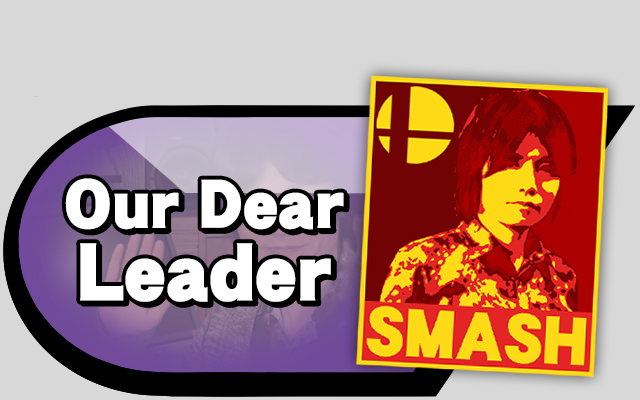AKA: The Dangers of the Cult of Personality and How to Effectively Navigate Between Unwarranted Criticism and Demigod Status:
WARNING: This is an editorial. Post your reactions in the comments below!
Today, I’ll be talking about the ‘Cult of Personality’. While Masahiro Sakruai is not the leader of any real country, he does lead the Super Smash Brothers fandom in a real tangible way.
Compared to some other companies, Nintendo is more likely to raise their staff to celebrity like status. Nintendo strives on familiarity among its fans. While the E3 2015 presentation lacked some games that fans were dying for, the actual presentation was essentially a love-letter to all the hardcore fans by including a ton of memes that we may fondly remember. Moments like Satoru Iwata holding a banana, and Reggie Fils-Aime ‘puppet body being ready’ are all shared memories among Nintendo fans that I regularly converse with online and in person.
Since Nintendo has raised their staff to celebrity like status, some users fall into the trap of blindly worshiping said staff. This is not good. At the end of the day, Nintendo staff members are people, not demigods.

When it comes to Sakurai, some fans have voiced concern that there is a culture of “anti-criticism”, or the opposite, “unwarranted criticism”. For me, there is a big difference between “anti-criticism”, “unwarranted criticism” and explaining the “designers intent”. Blindly accepting his decisions is just as bad as unwarranted criticism. in both of those cases, there is a real lack of understanding of the thought process that Sakurai has. The best possible avenue for the most effective, productive discussions will be between those who seek to understand first, and then criticize later. No matter what some people may think, there is some method to Sakurai’s design choices.
There is also the huge issue that Sakurai’s words are often twisted or misinterpreted. The Japanese language can be extremely ambiguous, and Sakurai’s lack of English speaking ability has lead to some confusion in the past among Western fans. In addition, the Smash community is extremely passionate about the series. Within this passion, they have often misrepresented or taken Sakurai’s words out of context. I’m working on an article that will hopefully correct some of this misquotes in the near future.
I strongly believe that we as a fandom, we should strive to understand the rationale behind such controversy issues like character selection, design choices and balance. I would like to make one thing explicitly clear: We at Source Gaming try our very best to distance our own opinion on Sakurai and his design choices and his official explanation, as much as possible. We have strong opinions on what characters should or shouldn’t be in Smash, and how the game should be balanced but for the time being those are largely unimportant.
While some of us at Source Gaming can be very passionate about those heated issues, we do try to stick with what Sakurai himself has said, and reserve our own opinions later. This is why we try not to interject our own opinion in translations, as there is a huge benefit to having translations standalone, available for both sides to use.
Let me know how you feel on this issue in the comments or on Twitter.
PushDustIn is currently reading through all 480+ of Sakurai’s Famitsu columns, various interviews and fan responses in order to get a better understanding of Smash’s design. Follow him on Twitter to keep up with the new information he uncovers.
- Smash Ultimate Development Timeline - May 16, 2020
- Straight from the Source: Koji Igarashi on Castlevania in Smash, Bloodstained - October 16, 2018
- Sakurai Discusses Isabelle, Echoes, and Newcomers - September 26, 2018









